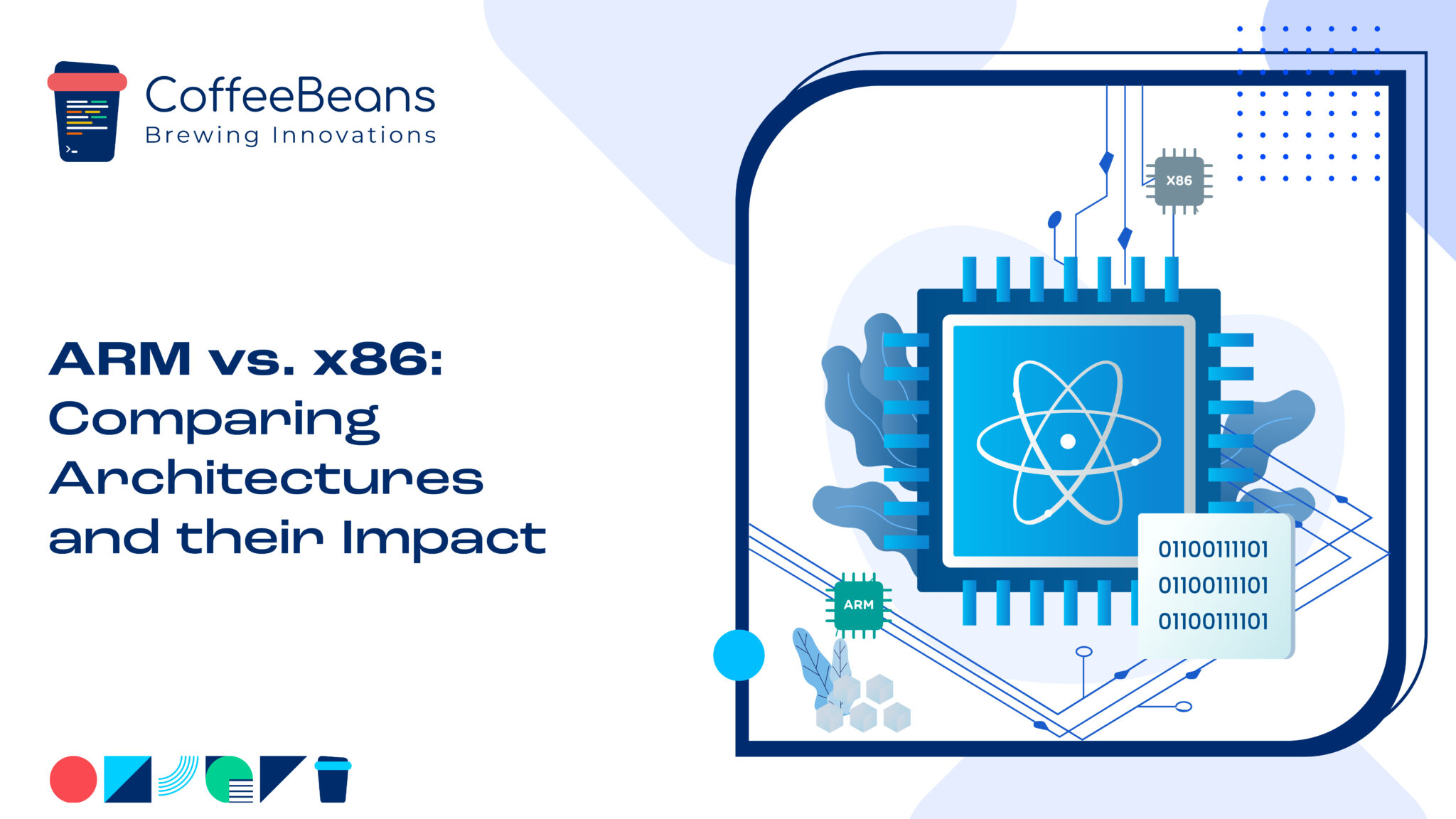ARM vs. x86: Comparing Architectures and Their Impact

July 10, 2023

Architectural Differences:
The fundamental difference between ARM and x86 processors lies in their architectural designs. ARM processors have a simplified instruction set, with each instruction completed in one cycle. On the other hand, x86 processors have a more complex instruction set, offering a wide range of instructions, some of which may require multiple cycles to execute. While ARM processors execute a finite number of commands, x86 processors have a much larger instruction set, with approximately 981 instructions in x86-64 architecture. This difference in architecture affects the execution efficiency, programming complexity, and overall performance of the processors.
RISC vs CISC and Development Impact: The RISC architecture of ARM processors emphasizes efficiency in cycles per instruction, while the CISC architecture of x86 processors focuses on efficiency in instructions per program. RISC processors execute simpler instructions within a cycle at a high clock speed, while CISC processors can perform complex operations with a single instruction. This distinction impacts development as RISC machines may require multiple instructions to execute tasks that can be done with a single CISC instruction. Both architectures have their own advantages and trade-offs, and the choice depends on the specific application and development requirements.
Energy Usage and Efficiency: ARM processors are designed with a focus on low power consumption and energy efficiency. Their integration into SoCs allows for overall resource management, resulting in lower heat production and simplified cooling systems. This makes ARM processors ideal for mobile devices like smartphones, where battery life is crucial. In contrast, x86 processors prioritize high processing speed and performance, which often results in higher power consumption and heat generation. While x86 processors excel in raw computing power, they tend to consume more energy compared to ARM processors.
Market Trends and Adoption: ARM processors have gained significant traction in the PC market in recent years. Apple’s transition to ARM-based M-series processors in their Macs has been a game-changer, with Apple accounting for around 90% of ARM-based PCs. ARM processors also power a significant number of inexpensive Chromebooks. Market projections suggest that ARM’s market share in the PC market could grow from the current 14% to 25% by 2027. The availability of more native Arm-based applications and the expertise of existing PC OEMs/ODMs and smartphone manufacturers entering the market contribute to the growing popularity of ARM-based PCs.
- Advantages and Disadvantages of ARM Processors:
- Advantages:
- Lower costs: ARM processors are affordable to create and manufacture.
- Simple design: ARM processors have a simpler architecture, making them easier to understand and implement.
- Low power requirements: ARM processors consume less power, resulting in extended battery life for mobile devices.
- Reduced heat generation: ARM processors produce less heat, reducing the need for complex cooling solutions.
- System-on-a-Chip (SoC) integration: ARM processors can be integrated into a single chip, resulting in compact designs and efficient resource management.
- Disadvantages:
- Compatibility: ARM processors face challenges with compatibility with x86-based software, such as the Windows operating system. However, this is changing with the availability of ARM-compatible versions of popular software.
- Limited calculation capacity: Some ARM processors may have limitations in terms of raw computing power, making them less suitable for resource-intensive tasks.
- Dependence on skilled programmers: Due to the simplified instruction set of ARM processors, software optimization and skilled programming are essential to achieve maximum performance.
- Advantages and Disadvantages of x86 Processors:
- Advantages:
- High computing power: x86 processors are known for their high performance and computing power, making them suitable for resource-intensive applications and tasks.
- Wide software compatibility: x86 processors have been in the market for a long time, resulting in a vast library of software and a wide range of compatible applications.
- Ease of programming: x86 processors offer a more straightforward programming experience due to their complex instruction set, enabling developers to write efficient code with fewer instructions.
- Disadvantages:
- Higher power consumption: x86 processors consume more power compared to ARM processors, which can result in increased energy costs and shorter battery life in mobile devices.
- Heat generation: Due to their high power consumption, x86 processors tend to generate more heat, requiring robust cooling solutions.
- Potential cost: x86 processors can be more expensive, especially for high-end models, making them less accessible for budget-conscious consumers.
Endnote: Choosing between ARM and x86 architectures depends on various factors, including the target application, performance requirements, power efficiency needs, and software compatibility. ARM processors excel in power efficiency, compact designs, and mobile applications, while x86 processors offer higher computing power, wider software compatibility, and versatility for PCs and servers. As the market evolves, ARM-based PCs are gaining momentum, driven by advancements in ARM-based hardware, software compatibility improvements, and the convergence of laptop and tablet form factors. It is important to weigh the advantages and disadvantages of each architecture when making decisions about hardware and software compatibility, ensuring that your choice aligns with your specific requirements and priorities.

